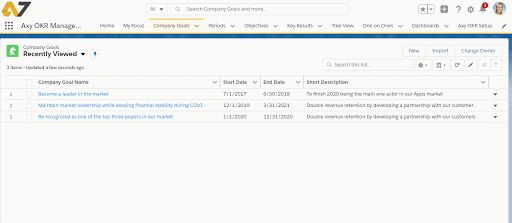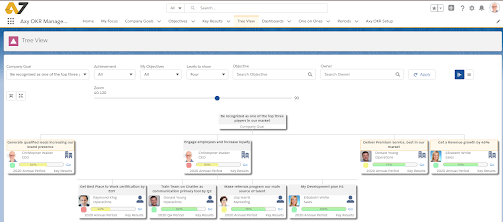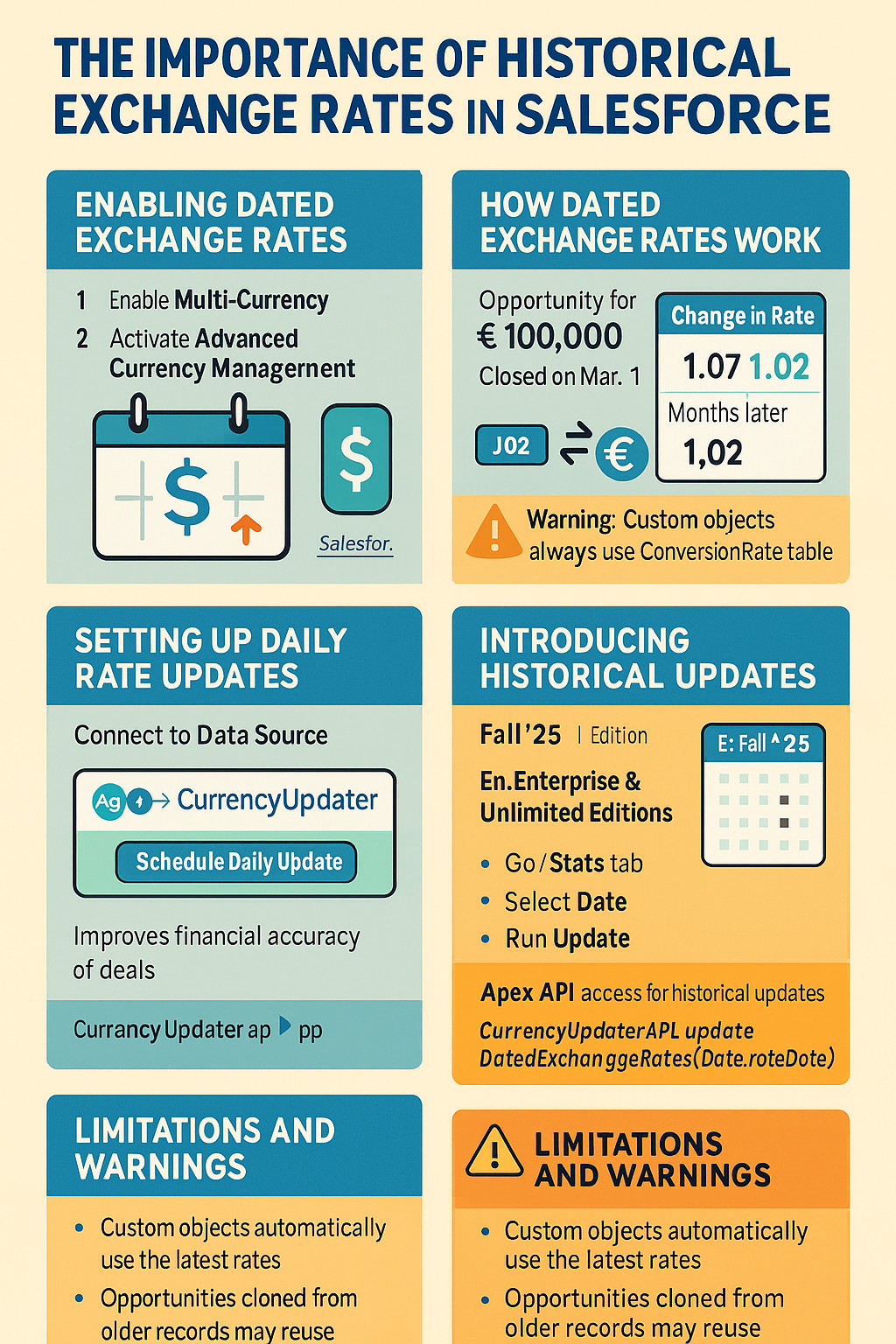OKR Planning for annual goals in Salesforce:
Strategic planning is a management tool that maps the way to achieve goals in a company. It works as a roadmap that determines where the company is, where it wants to go, and what are the necessary actions to accomplish this journey. All of this means that planning is essential to success. With a good plan, you can set goals, strategize, anticipate problems, and monitor your progress on any objective of the company.
Importance of executive planning & communication
Planning should begin top-down, with the CEO sharing a strategic and a financial perspective with the executive team. The strategic perspective should contain the three or four key business priorities for the company as well as the things that the company is not going to focus on in the coming year. For example, launching a new product or entering a new customer segment could be a priority; but expanding into a new geographic market won’t be. The financial perspective should consist of top-level metrics with specific goals for each metric, such as net new ARR which defines the goal post for the company, and the constraints within which you need to operate.
CEO priority sharing usually occurs once every year in an annual planning meeting. In this meeting, each executive leader needs to define the output expected of them and then share their plan to achieve those outputs with their peers. With this a first draft of the plan is ready, it will certainly need to be iterated upon and probably stressed tested to see if it can work under different scenarios. Once the final plan is done, communicating it is an art form.
Try to keep things simple: have one set of numbers and share the high-level plan with the entire company.
Annual vs Quarter Planning
Strategic company goals need a clear timeline because revenue needs to be hit and tasks need to be set. It seems natural to align these goals to an annual planning cycle particularly because of how revenue is tracked. Company-level objectives are typically the first goals set at the annual planning meeting and act as the lighthouse for the rest of the organization’s goals.
Compared to annual goals, quarterly targets provide a shorter cycle that allows teams to see results faster without sacrificing their ability to experiment and make changes. Revenue targets are set annually, but breaking the larger, annual goal into quarterly pieces gives teams more tangible results to drive towards and gives them the ability to set better targets based on their previous results. A quarterly cadence gives your teams more flexibility to adapt to new challenges more easily without needing to completely upend the annual plan.

Strategic company goals need a clear timeline because revenue needs to be hit and tasks need to be set. It seems natural to align these goals to an annual planning cycle particularly because of how revenue is tracked. Company-level objectives are typically the first goals set at the annual planning meeting and act as the lighthouse for the rest of the organization’s goals.
Compared to annual goals, quarterly targets provide a shorter cycle that allows teams to see results faster without sacrificing their ability to experiment and make changes. Revenue targets are set annually, but breaking the larger, annual goal into quarterly pieces gives teams more tangible results to drive towards and gives them the ability to set better targets based on their previous results. A quarterly cadence gives your teams more flexibility to adapt to new challenges more easily without needing to completely upend the annual plan.

Cascade down objectives best practices
A study from MIT showed that 67% of managers can’t name their CEO’s priorities, this is critical if you consider that cascading is an essential part of the planning process. The entire process is designed to provide a unique purpose and direction for the objectives of all employees in the company. This idea is very powerful and compelling.
Now we are sharing five best practices for your company’s cascading process:
- Start at the highest organizational level: It is important to start cascading at the highest level while ensuring that the executive level is involved and that through their leadership they can transmit the importance of the objectives. This will also reflect that all organizational efforts are focused on getting everyone aligned with the company goals.
- Lean on tools like Axy OKR: To make this process more effective it is recommended that you rely on tools like Axy OKR that have proven to be successful in helping organizations align their objectives throughout the organization. The first month is free, be sure to check our test drive here.
- Make it formal: Leverage on your internal communications to integrate the cascading process. This will help it be more effective and involve everyone at the company. Consider making it part of your culture with some help from your HR team.
- Teach managers how to do it: Effective goal cascading requires a prepared employee. A recommended method by experts is SMART goal setting, which proposes goals to be specific, measurable, achievable, realistic, and time-bound. Here you can learn more about this.
- Use Job descriptions: Consider the activities that each role has defined in the job description when you are cascading downwards. This will help align the objectives with the responsibilities of the employee, which will help set goals that make sense for his role and increase employee engagement since he actually understands the value he is bringing to the company

Bottom-up objectives best practices
According to Whatmatters.com cascading goals from the top-down, align teams but over-alignment can stifle creativity and individual motivation. Organizations need to find a balance between collective commitment and creative freedom. That is why allowing your employees to contribute to the goal-setting process is recommended. OKR’s actually help companies achieve this. Here you will find some of the best practices applied by organizations.
- Promote participation: make sure everyone feels comfortable expressing their ideas and thoughts and opinions without fear of reprisal. This has to be promoted by the executive level. An idea is to have internal communications and HR make this a part of the culture of the company.
- Career plans: Make sure every employee has a career plan. This will help them link their own development plans with the company goals which has been proven to increase performance, loyalty, and employee engagement with a direct positive relationship on company goal achievement.
- Build trust relationships: All your leadership team has to be able to create relationships based on respect and trust from their employees which will allow the bottom-up objective setting process to be more enriching for the company since good ideas can be easily transmitted upwards and the employees will get better feedback not just on every one on one meeting but on every conversation with his leader.
- Give them authority: You must understand that your employees actually know more about the business and their job than you, so empower them! Allow your employees to create and decide what their objectives should be. This will make them feel more engaged and part of the organization.
Axy OKR can help your teams have better conversations about their objectives and how they are aligned with the company goal. You can even help your leadership team track performance by automating Salesforce reports that will give more complete feedback on every one on one meeting.



